They can leap 40 feet in a single bound—and you might never know they were there. Mountain lions are stealthy, stunning, and built like ghostly athletes. They rule vast territories, slink through forests like shadows, and vanish before most people ever spot a whisker. They don’t roar. They don’t travel in packs. And yet, they’re one of North America’s top predators, quietly shaping the wild wherever they roam. These 12 facts pull back the curtain on a creature that prefers to stay hidden. If you think you know mountain lions, think again.
The Great Communicators
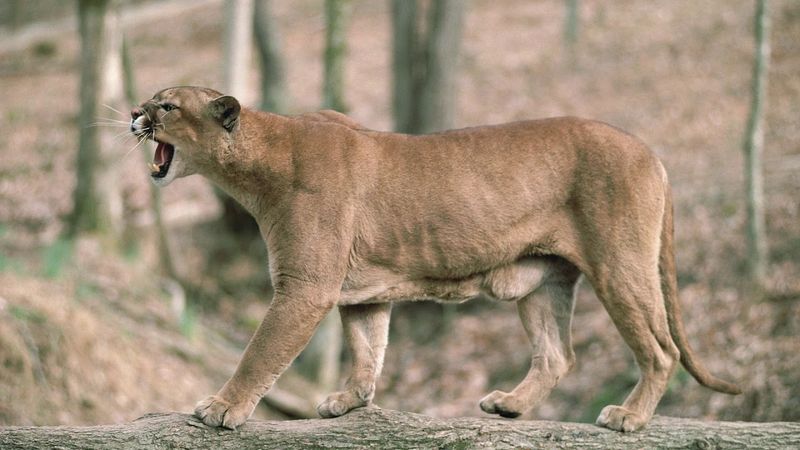
Mountain lions are rather solitary creatures, yet their communication is sophisticated. Through a series of growls, screams, and purrs, they express a wide array of emotions. A mountain lion’s scream is particularly chilling and can be heard from miles away. Interestingly, they cannot roar like other big cats, but their vocalizations convey messages of territory and mating intentions. Their communication, although quiet, is effective and necessary for survival. Despite their silence, these whispers of the wild ensure that they adapt and thrive in diverse environments.
Masters of Camouflage
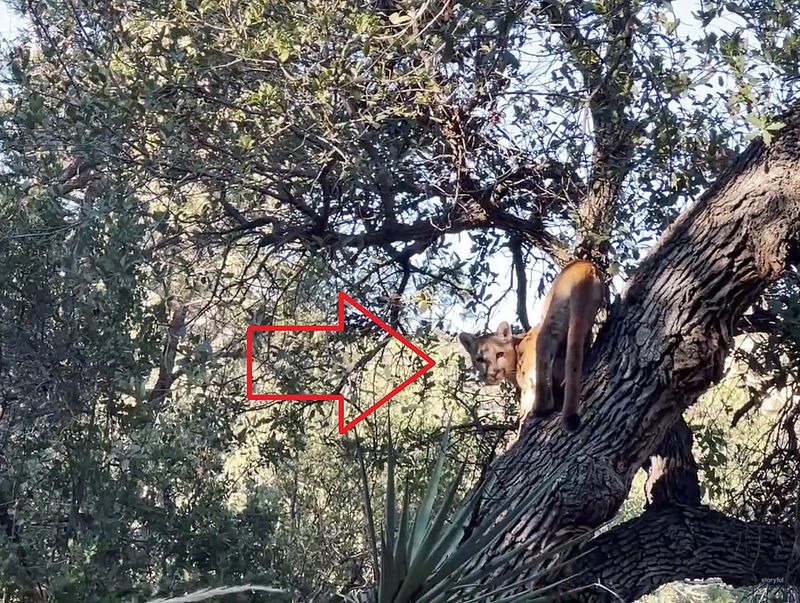
Camouflage is an art in which mountain lions are expert. Their tawny, often reddish fur, allows them to blend seamlessly into various environments. This natural disguise aids in stalking prey and avoiding detection by potential threats. Their stealthy nature, combined with their coloration, makes them almost invisible in the wild. This ability is not just about hiding but also about hunting effectively. Such mastery over camouflage is what makes them top predators. Rarely seen, yet ever-present, their presence is felt more than seen.
The Silent Stalkers
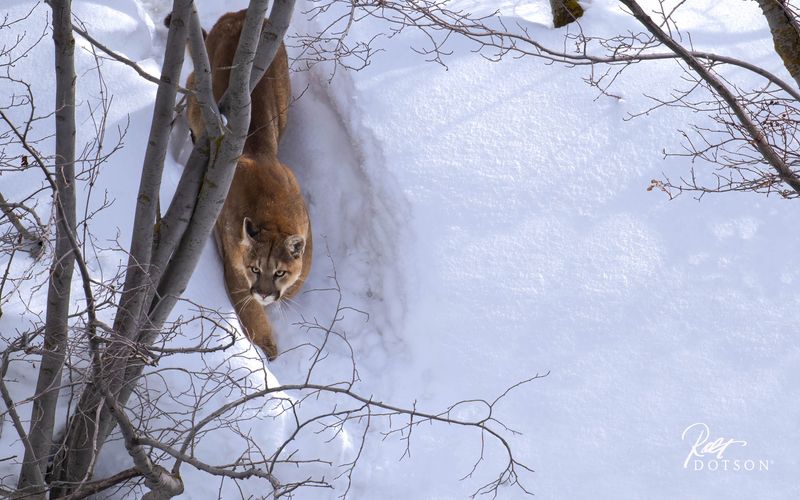
Graceful and stealthy, mountain lions are adept at moving silently through their territory. Their large paws are specially adapted to distribute weight evenly, allowing them to walk quietly, even on snow. This silent stalking is crucial for hunting, as it enables them to approach prey without detection. Their agility and stealth make them one of the most efficient predators in the wild. The combination of strength and silence allows them to capture prey much larger than themselves. A silent hunter, they are truly the ghosts of the mountains.
Keen Sight in the Dark

Mountain lions possess extraordinary night vision, a crucial survival trait. Their eyes, adapted to low light, allow them to hunt effectively during the night. This superior vision is due to a higher number of rod cells, which enhance their ability to detect movement in the dark. Coupled with their acute sense of hearing, they are formidable nocturnal hunters. This incredible eyesight also aids in navigating their often rugged terrain, ensuring they move safely under the cover of darkness. Their night vision is a testament to their adaptability.
The Wide Wanderers
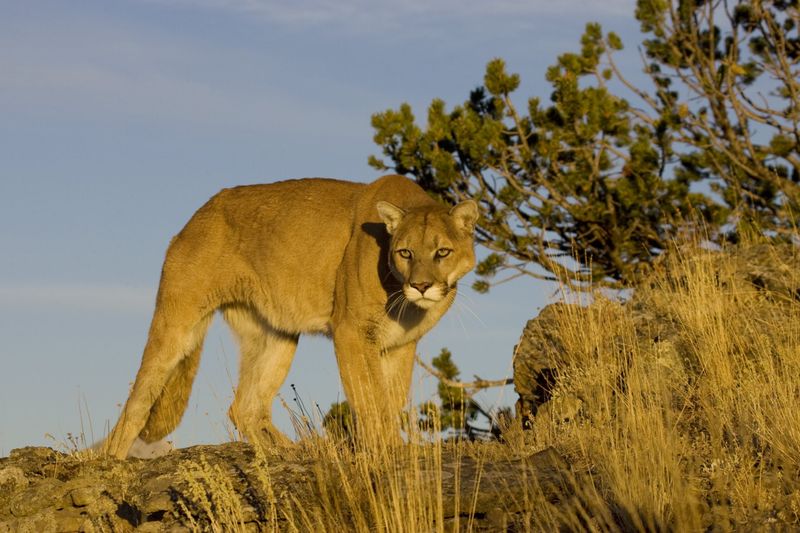
Mountain lions are known for their extensive range, covering diverse terrains across the Americas. They can traverse deserts, forests, and mountainous regions with remarkable ease. This wide-ranging ability is vital for finding food and mates, especially in regions where their numbers are sparse. Their adaptability to different environments highlights their resilience as a species. Despite habitat fragmentation, they continue to thrive by covering vast distances. The ability to roam far and wide makes them unique among big cats, often traveling over 20 miles in a day.
Swift and Powerful
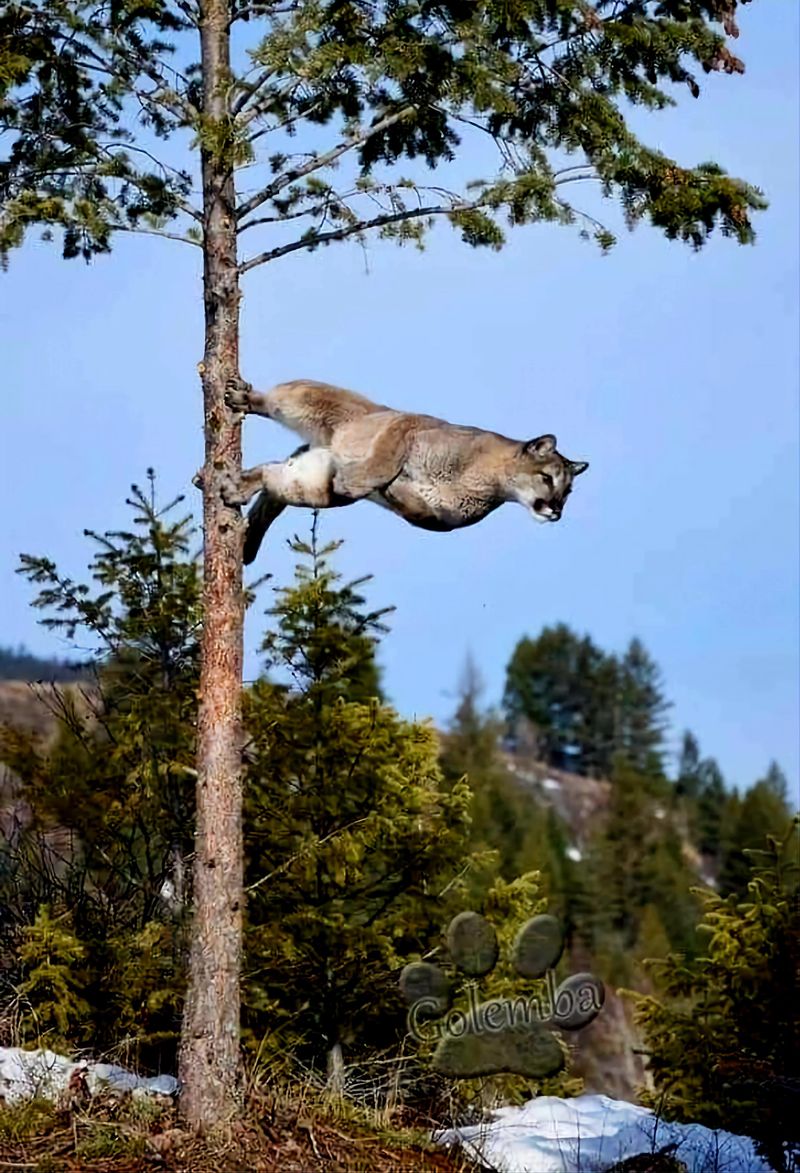
The mountain lion’s agility is unmatched. With powerful hind legs, they can leap up to 18 feet vertically and 40 feet horizontally. This impressive physical prowess is not just for show; it is essential for capturing fast-moving prey. Their bursts of speed, combined with strength, make them excellent hunters. Despite their size, they can navigate complex terrains with grace. Whether chasing down deer or evading threats, their agility ensures their survival in the wild. Their athleticism is awe-inspiring, a true marvel of the animal kingdom.
Solitary by Nature
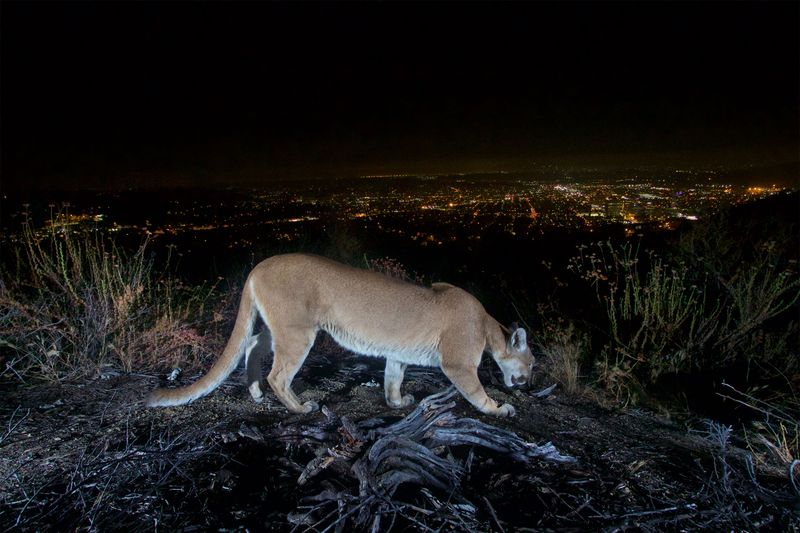
Unlike many other big cats, mountain lions lead solitary lives. They establish and fiercely defend large territories, often only coming together during mating season. This solitude minimizes competition for food and resources, ensuring their survival in harsh environments. Each mountain lion’s territory can span hundreds of square miles, necessitating a keen understanding of their landscape. Solitary by necessity, they are masters of their domain. Their independence is a key trait, allowing them to thrive across diverse habitats.
Mothers of the Wild
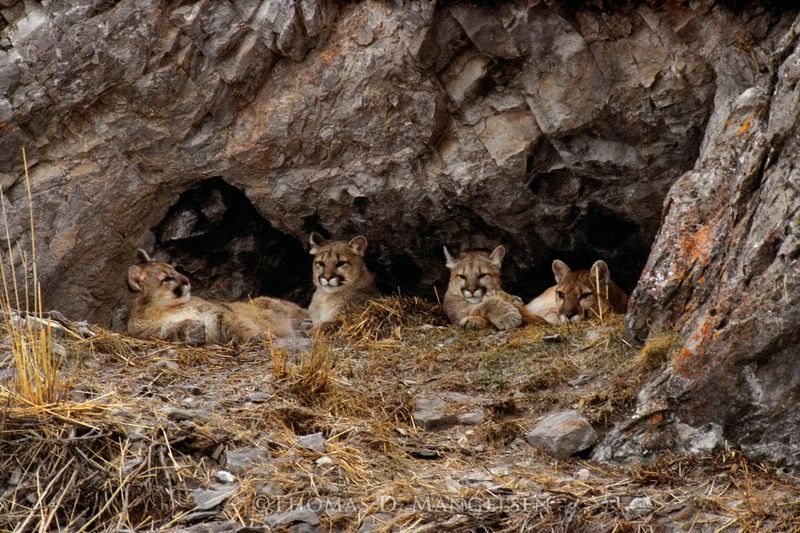
Mother mountain lions are devoted and protective, raising their cubs with care. After a gestation period of about three months, they typically give birth to a litter of two to four cubs. The young are born blind, relying entirely on their mother for survival. As they grow, the mother teaches them essential hunting and survival skills. This nurturing period can last up to two years, after which the cubs venture out on their own. The bond between a mother and her cubs is profound, ensuring the continuation of their lineage.
Adaptable Dieters
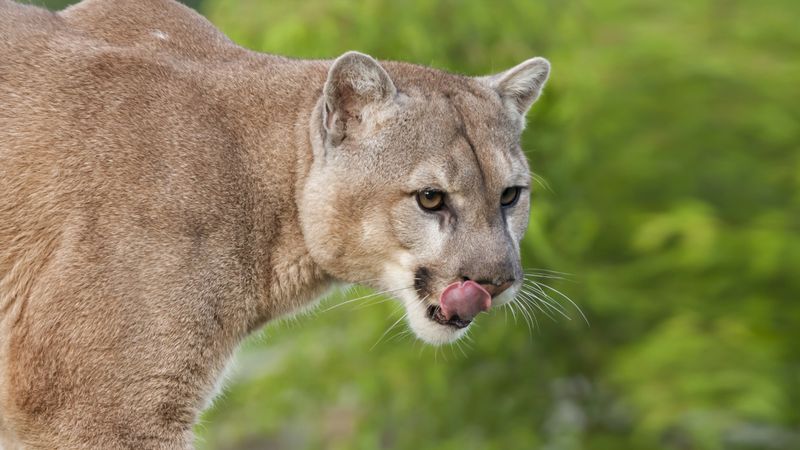
Mountain lions have a highly adaptable diet, feeding on a wide variety of prey. From deer to smaller mammals like rabbits, they are versatile hunters. This dietary flexibility allows them to thrive in different environments, adjusting to the available prey. Their keen hunting skills are matched by their ability to adapt, ensuring they rarely go hungry. This adaptability is crucial, especially in regions where prey availability fluctuates. Their varied diet reflects their resourcefulness and survival instincts, marking them as true opportunists of the wild.
Silent Communicators
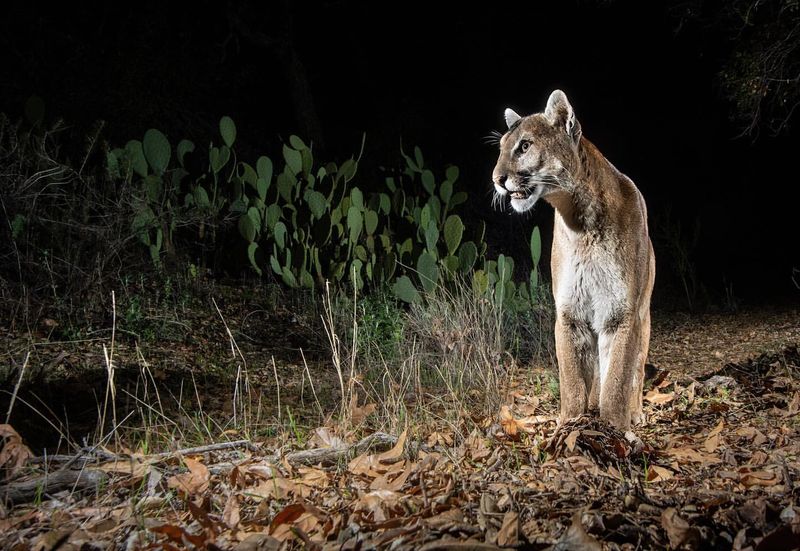
Communication among mountain lions is subtle yet effective. They use vocalizations, scent markings, and body language to express themselves. These silent signals help them navigate social interactions within their solitary lives. Their ability to communicate through scent is particularly fascinating, leaving messages for other lions in the area. This silent communication allows them to maintain territories and avoid conflict. Through whispers of scent and sound, they convey strength and intent, a testament to their intelligence and adaptability.
Remarkable Survivors
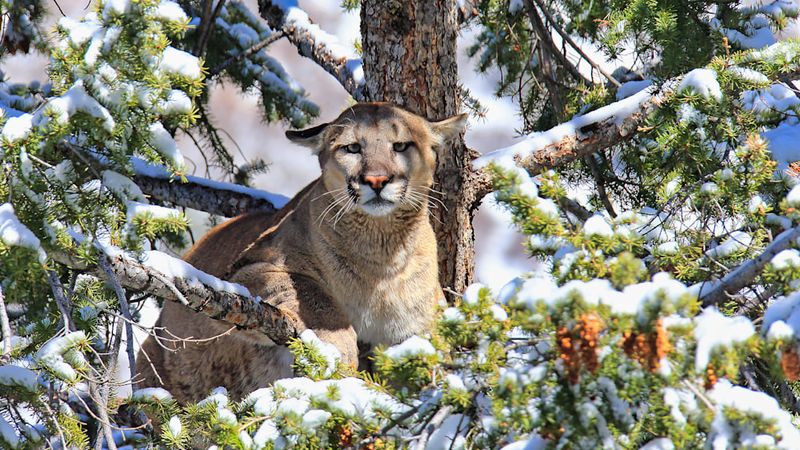
Mountain lions have survived numerous challenges over the centuries, from habitat loss to hunting pressures. Their resilience is evident in their continued presence across a vast range. Despite being hunted to near extinction in some areas, conservation efforts are aiding in their recovery. Their survival is a testament to their adaptability and strength. They have managed to thrive where many species have faltered. By adapting to changing landscapes and threats, mountain lions remain an enduring symbol of wild resilience.
The Ghosts of the Wilderness
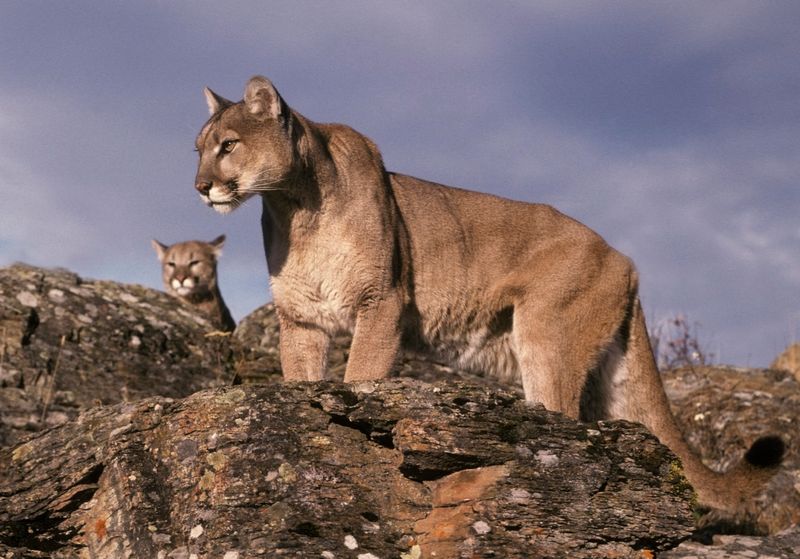
Known as “ghost cats,” mountain lions are elusive and rarely seen. Their secretive nature makes them one of the most mysterious predators. They blend into their surroundings and often move under the cover of night. This elusive behavior protects them from human threats and ensures their hunting success. The nickname “ghosts of the wilderness” aptly describes their ability to remain unseen while leaving a significant impact on their ecosystem. Their mysterious presence continues to captivate those who seek to understand them.

